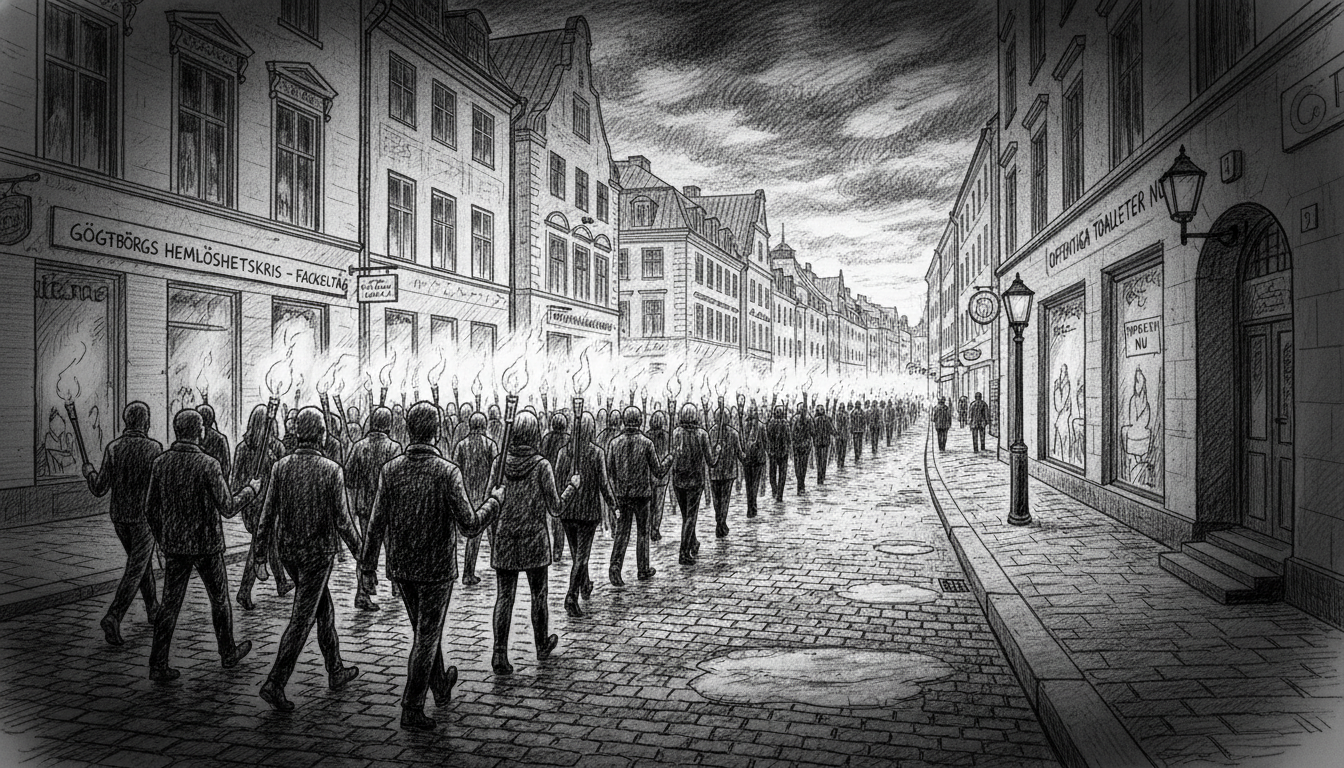Hundreds of people carried torches through Gothenburg's streets last evening. They marched to draw attention to the city's growing homeless population. The demonstration highlighted urgent needs facing those without permanent housing.
Robert, who currently experiences homelessness, joined the procession. He identified public toilet access as the most pressing issue. "The most immediate need is that there are no open toilets," Robert explained during the event. His comment underscores basic infrastructure gaps affecting vulnerable residents.
Participants discussed multiple aspects of homelessness during the march. The conversation extended beyond immediate shelter needs to include daily survival challenges. Many shared personal experiences of navigating life without stable housing.
Gothenburg's homeless situation reflects broader Scandinavian urban challenges. Sweden traditionally maintains strong social welfare systems, yet cities face increasing housing shortages. Rental market regulations and population growth contribute to the problem. International readers might find this surprising given Sweden's reputation for social equality.
The torch march represents growing public concern about social exclusion. Organizers chose evening visibility to maximize awareness. The flickering lights through city streets created a powerful visual statement about those living in darkness.
Homelessness in Swedish cities has evolved over the past decade. Rising immigration, housing market pressures, and mental health service gaps all play roles. Gothenburg specifically struggles with affordable housing shortages despite being Sweden's second-largest city.
What does this mean for international observers? Scandinavian countries face similar urban challenges as other developed nations. The image of perfect Nordic welfare states sometimes obscures real social problems. This demonstration shows that even societies with strong safety nets experience housing crises.
Local authorities continue developing responses to homelessness. Temporary shelters, social housing projects, and support services all form part of the solution. Yet participants in yesterday's march clearly believe current efforts remain insufficient.
The event's timing during colder months highlights seasonal dangers. Scandinavian winters pose serious health risks to those without proper shelter. This adds urgency to calls for improved services and facilities.
Robert's specific concern about public toilets reveals practical daily struggles. Basic human needs become major obstacles for homeless individuals. The absence of public facilities complicates maintaining hygiene and dignity.
Similar demonstrations have occurred in other Swedish cities recently. Stockholm and Malmö witnessed parallel events addressing homelessness. This suggests a national pattern rather than isolated local issues.
International residents in Gothenburg might wonder how this affects them. While most expatriates enjoy housing stability, the situation impacts city services and community wellbeing. It also reflects broader urban planning challenges that affect all residents.
The torch march successfully drew public attention to an ongoing crisis. Yet the real test comes in whether it prompts concrete policy changes and resource allocation. Both municipal and national governments face pressure to address systemic housing issues.

